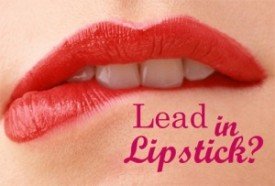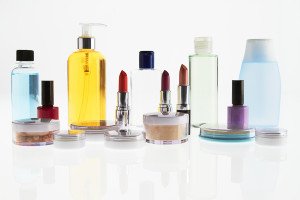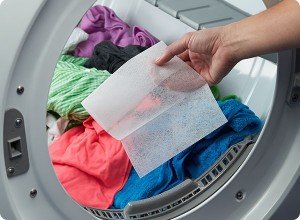Lipsticks, glosses contain toxic metals: report
4 min read
(HealthDay News) — Lipsticks and lip glosses apparently give you more than colorful kissers, according to a new study by California scientists that contends the products contain lead, cadmium, chromium, aluminum and five other toxic metals.
The research team tested 32 different lip glosses and lipsticks commonly sold at drug and department stores. Some metals were detected at levels that could raise potential health concerns, the researchers said.
“Lipsticks and lip glosses often have levels of toxic metals which approach or exceed acceptable daily doses based on public health guidelines,” said researcher Katharine Hammond, a professor of environmental health sciences at the University of California, Berkeley.
Hammond declined to name brands tested. “I would treat these results as applicable to all lipsticks,” she said.
The U.S. Food and Drug Administration, however, does list the lead content of many lipsticks by brand on its website.
In the new study, lead was found in 24 of the 32 products, but at a concentration usually lower than the acceptable daily intake levels.
“At an average level of use, it’s not likely to be an issue,” Hammond said. She added that she’s concerned, however, about children playing with makeup, as no level of lead exposure is considered safe for them. Heavy adult users might consider cutting down, she added.
In the study, certain colors were not more likely than others to have the toxic metals, Hammond said. Nor were glosses more likely to have them than lipsticks, or vice versa.
The study was published online May 2 in the journal Environmental Health Perspectives.
The new report isn’t the first to focus on toxins in lipsticks. In 2007, the Campaign for Safe Cosmetics tested 33 lip products and found that 61 percent contained lead, some with levels high enough to cause concern.
The current study went further than measuring the levels of lead and eight other metals. Researchers estimated risk based on the concentration of the metals detected and the users’ potential daily intake — average or high. They compared that information with existing public health guidelines about acceptable intake levels.
The researchers focused on lipstick and lip gloss, they said, because those who wear them absorb or eat them, bit by bit.
High use was defined as ingesting 87 milligrams of the product a day. That would involve repeated reapplying, Hammond said. Average use was about 24 milligrams a day.
When used at an average daily rate, the estimated intake of chromium from 10 products exceeded acceptable daily intake, the researchers found. Chromium has been linked to stomach tumors.
High use of the products, they found, also could result in overexposure to aluminum, cadmium and manganese. High manganese levels have been linked to nervous system problems.
The findings do signal a need for more public oversight, the researchers said.
The FDA regulates cosmetics safety under the authority of the Federal Food, Drug and Cosmetic Act. Cosmetics must be safe when used as the label directs or under ordinary conditions. The FDA does not, however, require cosmetics to get pre-market approval. Color additives must get pre-market approval, in most cases. No limits for lead in cosmetics have been set by the FDA.
The FDA, however, has set specifications for lead in the color additives that are used in cosmetics.
The Personal Care Products Council, a trade association representing the cosmetics industry, said in a statement Wednesday that the lead content of lipsticks has already been studied by the FDA and that the agency decided the amounts involved were not a threat to public safety.
“Trace amounts of metals in lip products need to be put into context,” Linda Loretz, chief toxicologist for the council, said in the statement. “Food is a primary source for many of these naturally present metals, and exposure from lip products is minimal in comparison. For example, daily trace amounts of chromium or cadmium from lip products based on the results in this report are less than 1 percent of daily exposures one would get from their diet. In the case of manganese, typical daily intake from food is more than 1000-fold greater than the amount from lip products.”
“Cosmetic companies are required by law to substantiate the safety of their products before they are marketed. Nothing matters more to cosmetic companies than the safety and the well-being of the people who use and enjoy them,” Loretz added.
The findings are not surprising, said Dr. Luz Fonacier, head of the allergy and training program at Winthrop University Hospital in Mineola, N.Y. Many lip products are packaged in metal containers, she said, “and this may affect the amount detected by investigators.”
“I agree with the authors that there should be U.S. standards for metal content in cosmetics and that monitoring of metals in cosmetics, especially those with a higher likelihood of ingestion or absorption, should be done,” Fonacier said.
Dr. Ken Spaeth is director of occupational and environmental medicine at North Shore-LIJ Health System in New Hyde Park, N.Y. He reviewed the findings and has written a book for doctors on detecting heavy metal exposure problems.
He said, “The findings should certainly raise concern about the use of the products.”
Certain people should be especially careful about exposure, he said, including pregnant women and teens. “The fetus is particularly susceptible,” he said. “And brain development continues throughout adolescence.”
More information
To learn more about cosmetic regulation, including lipstick and lead, visit the U.S. Food and Drug Administration.
SOURCES: Katharine Hammond, Ph.D., professor, environmental health sciences, University of California, Berkeley; Ken Spaeth, M.D., director, occupational and environmental medicine, North Shore-LIJ Health System, New Hyde Park, N.Y., and author, Heavy Metals: A Rapid Clinical Guide to Neurotoxicity and Other Common Concerns; Luz Fonacier, M.D., head, allergy and training program, Winthrop University Hospital, Mineola, N.Y.; May 1, 2013, news release, Personal Care Products Council, Washington, D.C.; May 2, 2013, Environmental Health Perspective, online






